Strength-Speed: Customized Mechanics for Baseball Pitchers
This post comes from Graeme Lehman, who has been working on his “customized mechanics” series on his website. Graeme aims to build mechanics and train each athlete based on their physical profile. You can find the original post here. Be sure to check out his website for more great content.
Below is the chart that Graeme uses to illustrate how we must train each pitcher differently.
Today’s focus is going to be on “Strength-Speed” which is a type of strength that is described as moving a moderately heavy load at a moderate speed. This is important because when we initiate the pitching delivery we are in fact moving a moderate load, in the form of your own body weight, at a moderate speed, before moving faster and faster as we climb the kinetic chain and let go of the baseball.
To put some numbers with the term moderate we can think of an external training load as being about 75-85% of 1RM while the speed is in the 0.75-1.0 m/s range.
The intent on moving the load, however, should not be moderate since you should be moving at a max speed. Due to the load, the speed then slows down to this “moderate” range.
Looking at the chart below we can see some of the exercises that are associated with this part of the force-velocity curve. These types of exercises help us measure both how much “strength-speed” an athlete has as well as providing a means to train and improve this area, if this athlete needs to spend time and energy improving this athletic quality.
The two types of exercises that we see on either side of “Strength-Speed” are Olympic Lifting and weighted jumps.
Before we move onto the controversial topic of Olympic Lifting for baseball players I do want to mention that traditional lifts like deadlifts, bench press or squats can also be performed in this range of moderate load and speed.
However, it’s harder to use them as an assessment tool since approximately 34% of each lift is spent accelerating while the remaining 66% is spent decelerating the weight.
Olympic Lifting – The Controversy for Baseball
Olympic lifting for baseball is a controversial topic but controversy gets people’s attention.
In fact, there is a good chance that you are reading this site due to the fact that I did an interview with Eric Cressey discussing my research since it helped him justify why he doesn’t use Olympic lifting with his baseball players, in particular pitchers.
In this interview, we talked about how he was receiving a lot of criticism when he wrote that he doesn’t use Olympic lifts for his pitchers.
For some strength and conditioning professionals, this was blasphemous since Olympic lifts are held in such high regard for some coaches.
But like any exercise or drill we must weigh the risks vs the rewards to see if it is the right tool for the job. In my opinion traditional Olympic lifts like the clean and snatch do not provide enough rewards to outweigh the risks which could be an injury to the wrist’s and elbows, not to mention the fact that it isn’t a great predictor of throwing velocity since it isn’t specific enough to the movement.
Lower body power that can be attained from moving a moderate load at a moderate speed can definitely help out when you’re on the mound. This is especially true of weaker players.
Let’s look for a “Win-Win” situation where we can work on producing this type of force with the lower body without having to catch a heavy barbell on our shoulders and wrists.
Movements like jump shrugs or high pulls allow for us to “reject what is useless and accept what is useful”. These are known in the S&C world as Olympic Lifting derivatives.
In fact there are research papers like this one or this one out there that show that Olympic weightlifting derivatives that don’t include the catch phase like a high pull or jump shrug produce just as much benefit.
If we are going to use these types of lifts then we need to find a way to quantify them and the best way to do this is to measure bar speed.
Radar guns don’t pick up barbell velocity very well so if you want to use Olympic lifting derivatives to assess how much “strength-speed” a particular athlete has then you need to get your hands on a device like the tendo unit, bar sensi or push device.
The reason that you need to quantify the speed is that if we only use the weight on the bar as a guide the Olympic lifts tend to be too slow in order to get the benefits we want from training in strength-speed zone.
“I’ve mentioned this before idea before here when I read an article by Dr. Bryan Mann who is an expert in the field of velocity based training. He recounts a story about how he measured the velocity of the Olympic lifts with his football team when the weight on the bar was the primary focus.”
When he measured the speeds, they were in the 0.6 to 0.8m/s range when his guys were performing hang cleans so it was only the fastest guys that were just barely in this “strength-speed” range of 0.75 to 1.0 m/s.
The proof that it was too slow came when they tested vertical jumps and didn’t see any improvements. But when the speed of the bar became the focus, the jump heights went up.
Jump height is a far better indicator of on-field football performance which is the reason we don’t see Olympic lifting at the NFL combine.
Remember that we are using the weight room to increase our performance on the mound. The fact that we aren’t lifting the weight with one leg in the frontal plane, like we see on the mound, still means that the benefits that a pitcher gets from using Olympic lifts, even if they are performed fast enough and safe enough, might not be the right choice for each athlete.
But I do really like how they can be used to help an athlete initiate power from a complete stand still. This is an area that I feel a lot of players with lots of mobility, elasticity and limb length could use since they can’t get enough FORCE in the first place in order to take advantage of these qualities which help produce SPEED. Remember that FORCE x SPEED = POWER.
So if a player is generally weak like we talked about in the absolute strength article it is pretty safe to assume that their strength-speed isn’t very good either. Personally, I like to use some traditional lifts like squats and deadlifts with an emphasis on speed to help increase this quality while also making them stronger overall.
Even if the bar spends more than half the time slowing down I still take it over trying to catch the weight.
Even guys that have lots of absolute strength can benefit from this type of training if they can’t move 75-85% of their 1RM in that speed range that we are looking for.
In other words, this player is strong but slow, which doesn’t allow for max power when we are talking about a 5 oz. baseball.
To sum things up here I think that in most cases Olympic lifts don’t provide baseball players the biggest bang for their buck but if you are going use them I suggest:
- not catching the weight
- starting from a standstill
- measure bar velocity
The next part of this series will talk about weight jumps as we make our way towards “speed-strength”. This one should be fun to put together since I have some examples of guys that can throw 95mph+ doing some weighted jumps.
Jarad Vollkommer
Latest posts by Jarad Vollkommer (see all)
- Strength-Speed: Customized Mechanics for Baseball Pitchers - August 20, 2019
- Determining Individual Stability Needs for the Baseball Player - June 25, 2019
- In-Season Training Metrics for the Baseball Player - March 5, 2019




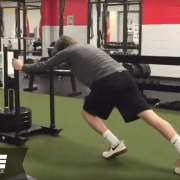
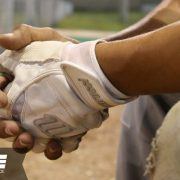

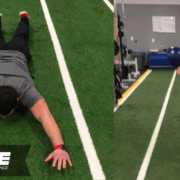
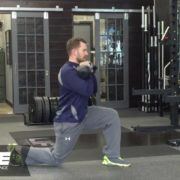
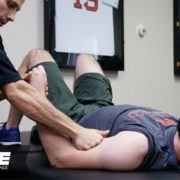


Leave a Reply
Want to join the discussion?Feel free to contribute!